The North Island of New Zealand offers a landscape quite different from the South Island, yet every bit as compelling for photographers. The North Island New Zealand photography workshops I lead are designed to explore this diversity in depth — from volcanic plateaus and geothermal wonders to rugged coastlines and ancient native forests, each providing unique creative opportunities.
Similar to the South Island, there are a huge number of incredible locations that could make a list like this. For this guide, I’ve selected five locations that offer a mix of classic North Island landscapes and authentic experiences that will reward curious photographers.
Whether you’re exploring on your own or joining one of my North Island New Zealand photography workshops or photography tours, these destinations will inspire your creativity and challenge your skills in equal measure.
1. Cathedral Cove – Coromandel Peninsula
Cathedral Cove is one of the most recognisable coastal locations in the North Island, yet it remains an exciting and rewarding location for landscape photography. Its dramatic archway, which perfectly frames the ocean beyond, is a favourite subject in many New Zealand photography workshops because it combines variety, challenge, and creative potential. The naturally formed arch with Te Horo – the offshore sea stack – is a classic composition (as shown in the banner image above). Sunrise is the best time to capture this scene with dawn light casting soft tones across the sand and water.
Beyond the archway, the offshore rock formations at Cathedral Cove provide another opportunity for photography. These striking stacks are ideal for experimenting with long exposures, and at dusk they often sit beneath skies alive with dramatic cloud formations.
Even the walk down to the cove offers chances for photography, with elevated viewpoints perfect for sweeping coastal landscapes. While Cathedral Cove is busy in peak season, those who arrive early are rewarded with softer light, calmer seas, and a quieter atmosphere — the ideal conditions to capture both the classic archway / Te Horo image and the beauty of the surrounding rocks.
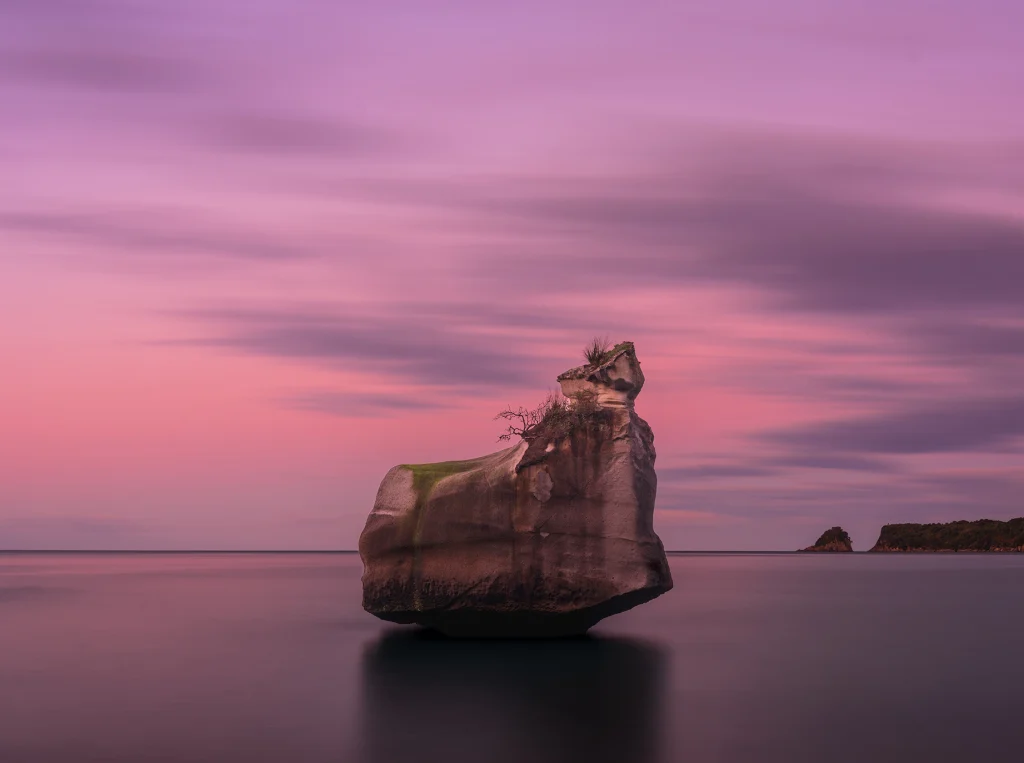
2. Mount Taranaki – Taranaki Region
Few places in the North Island offer such a perfect natural subject as Mount Taranaki. With the wider region providing so many incredible options, it’s no surprise this is a highlight of many North Island photography tours.
One of my favourite ways to capture Mount Taranaki is from the coast at Cape Egmont Lighthouse. Since I love photographing lighthouses, this combination works beautifully, especially at dusk when soft light balances the scene. Lake Mangamahoe is another favourite for still reflections of the mountain at dawn, while the foothills provide countless rural perspectives — rolling farmland, winding roads, and even derelict buildings that frame the mountain in unique ways.
Probably the most famous shot is the mountain’s perfect symmetry reflected in the Pouakai Tarns. Capturing this view takes commitment: a steep 2.5-hour climb leads to the tarns and a hut that must be booked well in advance. But the reward is one of New Zealand’s most iconic compositions.
The surrounding national park offers plenty of variety, from tumbling waterfalls to mossy forest trails. Dawson Falls, Wilkies Pools, and the Goblin Forest are all easily accessible and provide atmospheric subjects. Further up the coast, Tongaporutu delivers rugged seascapes and striking rock formations, including the Three Sisters. Best accessed at low tide and photographed at sunset, this coastline offers brilliant opportunities for dramatic long exposures.
Few locations in the North Island deliver such a powerful mix of variety, challenge, and creative inspiration as Mount Taranaki. For anyone joining a North Island New Zealand photography workshop or photography tour, Mount Taranaki teaches the value of patience — waiting for the clouds to clear, the winds to still, or the light to fall just right.
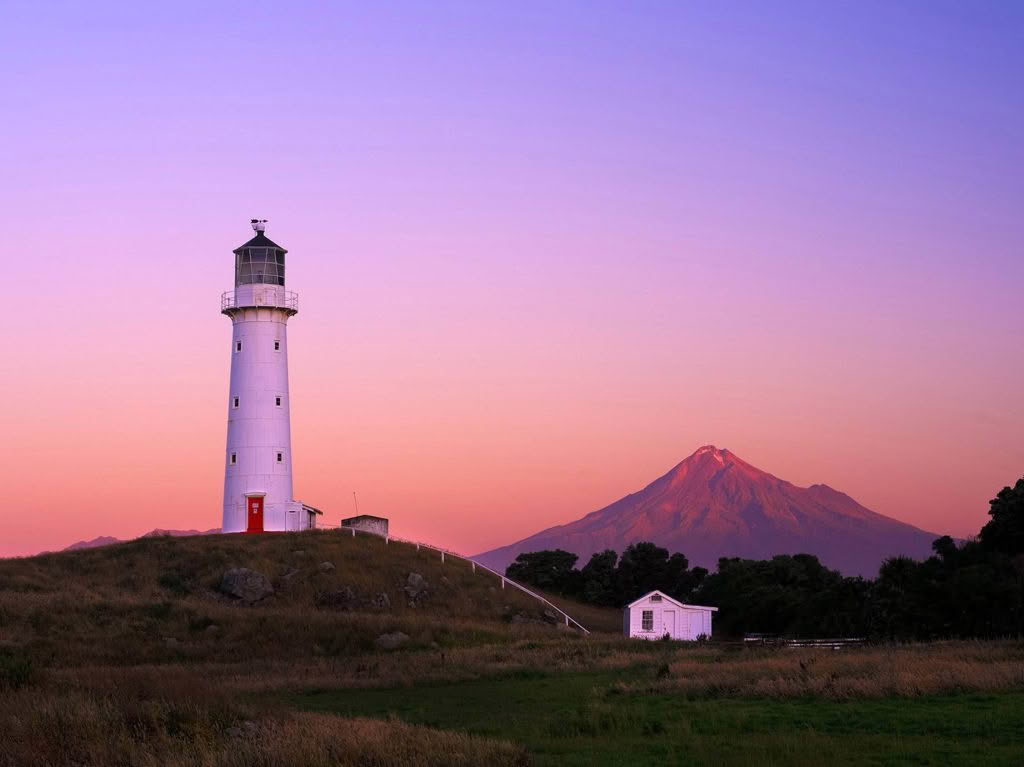
3. Rotorua – Geothermal Landscapes and more
Rotorua provides some of the North Island’s most diverse photography experiences, from geothermal wonders to tranquil lakeside jetties and towering redwood forest. Known worldwide for its geothermal activity, Rotorua offers a palette of colours and textures that are unlike anywhere else in the country. From the vivid orange and green of Champagne Pool at Wai-O-Tapu to the steaming vents and bubbling mud pools scattered across the region, these geothermal landscapes provide endless opportunities to experiment with composition and light.
The Rotorua region also offers tranquil lake scenes that contrast beautifully with the drama of the hot springs. The wooden jetties of Lake Rotorua and Lake Tarawera are classic subjects, especially in the stillness of dawn when soft light and calm water create perfect reflections. With Mount Tarawera looming in the background, Lake Tarawera in particular offers striking compositions that reward patience and an early start.
The towering redwood forest near Rotorua provides a chance to shift gears and focus on texture, scale, and atmosphere. The vertical lines of the trees, especially in misty or low light, can create powerful images that add variety to your portfolio.
It’s no surprise Rotorua often becomes a favourite stop on my North Island New Zealand photography workshops, as it offers such a wide range of textures, colours, and moods in one place
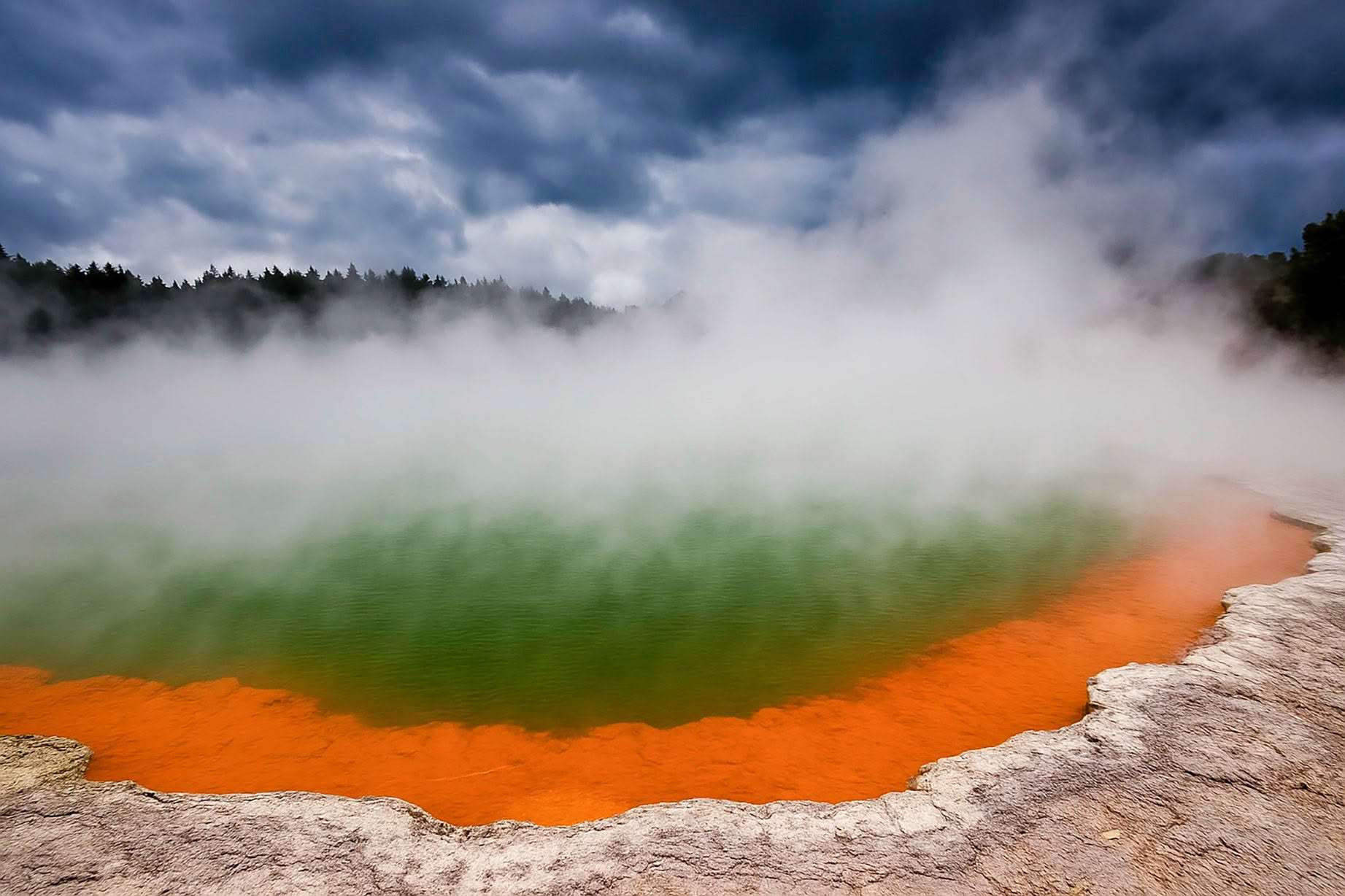
4. Central Plateau – Mount Ngauruhoe and Surrounding Volcanoes
The Central Plateau delivers when it comes to dramatic landscapes, with Mount Ngauruhoe, Ruapehu, and Tongariro offering endless options for landscape photography. A few days spent in this region can reward with dramatic mountain images but also waterfalls, desert tussock, mossy forest and hidden chasm’s. It’s no surprise this region has become one of my most popular New Zealand photography tours.
Mount Ngauruhoe, often recognised as “Mount Doom” from The Lord of the Rings, is instantly striking. Its perfectly symmetrical cone takes on entirely different moods depending on the season and weather. There are various places to capture it from but one favourite is Scoria Flats which is on Bruce Road – the main road leading up to the ski fields – which offers dramatic viewpoints of the mountains.
But it’s not all about the volcanoes. The Taranaki Falls track weaves through lush beech forest before opening out to one of the most photogenic waterfalls in the region. Taranaki Falls is worth shooting at anytime of day, though early morning often brings softer light and sometimes the added atmosphere of fog drifting through the valley.
On calm days, the Tama Lakes offer a brilliant and unique landscape with the mountains. At sunset this spot can deliver truly magical (if hard-earned) images. Tawhai Falls, a short walk from the road is another great waterfall to photograph.
What makes the Central Plateau so rewarding is the variety. From photographing vast volcanic landscapes to fine details like alpine plants, moss-covered rocks, or stunning beech forest. Whether it’s the challenge of capturing Ngauruhoe at dawn or the intimacy of a forest waterfall, this amazing region has plenty to offer and reward.
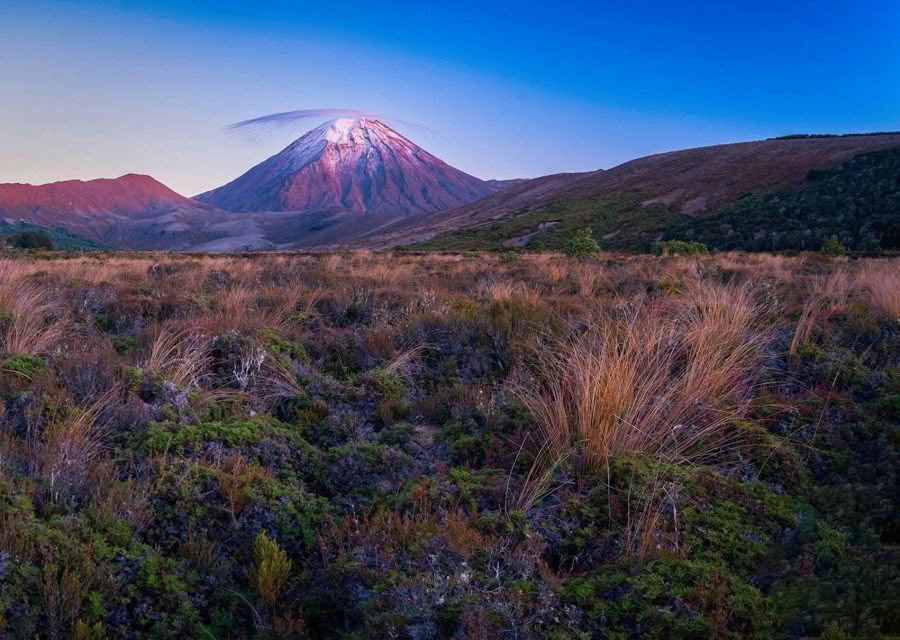
5. Northland – Cape Reinga
At the very top of the North Island, Cape Reinga is a place of raw beauty and cultural significance. For Māori, this is where spirits are said to depart on their journey, and for photographers, it’s where land, sea, and sky collide in dramatic fashion.
Cape Reinga itself, , is the anchor point of the region. It’s perfect for sweeping panoramas that capture the iconic lighthouse, the grandeur of the headland and the vastness of the ocean, where the Tasman Sea meets the Pacific Ocean in powerful, swirling currents. Sunset is the best time to photograph here as the last light of the day sweeps across this unforgettable scene.
Another standout view is towards towards Cape Maria van Diemen, New Zealand’s westernmost point. It’s rugged and dramatic headlands and sweeping beach framed by the endless Tasman horizon is something special. The contrasts between ocean, dunes, and sky make for striking compositions, especially in the golden light of early morning or late afternoon.
Just inland, the Te Paki Sand Dunes offer a complete change of pace. This vast expanse of shifting shapes and textures feels like stepping into a desert. The climb up the dunes reveals new abstract patterns shaped by the wind, especially when framed against a colourful Northland sky.
Together, these landscapes — ocean cliffs, remote headlands, and sculpted dunes — make the Far North a region that constantly surprises and rewards photographers who make their way up there.
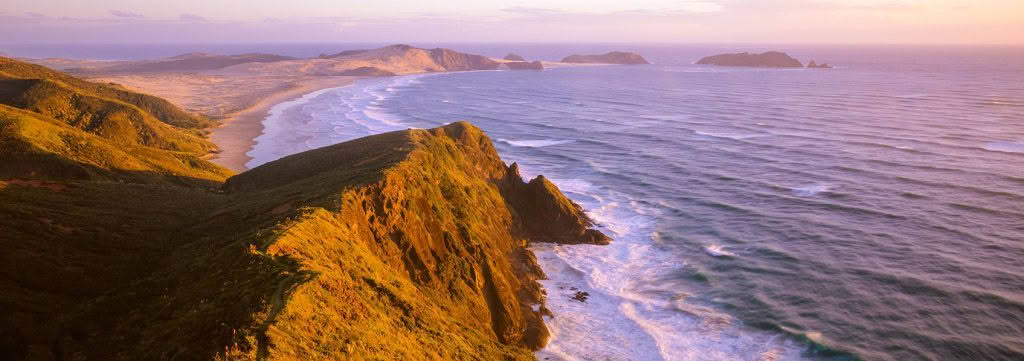
Making the Most of Your North Island Photography Journey
The five locations above only scratch the surface of what the North Island offers photographers. As with any New Zealand journey, planning helps, but the North Island also teaches you to expect the unexpected. Mist can roll over a volcanic plateau in minutes, Rotorua’s pools change colour with the light, and the coastlines feel different with every tide. The most memorable photographs often come when you’re willing to adapt, slow down, and let the landscape reveal itself.
North Island New Zealand Photography Workshops
Joining one of my North Island New Zealand photography workshops can make this balance easier. With local knowledge and years of experience, I help participants be in the right place at the right time — but also ready to embrace whatever unique conditions unfold.
Whether you explore on your own or as part of a group, the North Island offers not just spectacular images but inspiration that stays with you long after the trip.

